With the Italian National Sea Day, an event that has become a tradition since 2017, we want to reaffirm the crucial role of an element which makes up 70% of the globe. We also emphasise what it has represented in the history of humanity since the dawn of time. Let’s see it together, are you ready?
“Even though we call it Planet Earth, some people argue that we should call it Planet Ocean or Planet Water”.
(David Abulafia, Professor Emeritus of Mediterranean History at Cambridge University)
The mutual influence of the sea on man and man on the sea
A spontaneous evocation arises on dedicated days, such as 11 April, aimed at deep reflection. It is a recollection of times gone by, memorable moments of a glorious past, and a bitter reflection on the worst human action has done to Mother Nature. The sea, scenery, and protagonist, from history to mythology, is a great resource to be respected that can be our worst enemy if we challenge it.
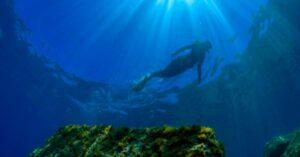
The relationship between man and the sea is an almost inseparable aspect, a profound bond capable of painting the distinctive features of the people who overlook it. Since immemorial times, the sea has been a means of communication and a priority “channel” for trade, travels, and an encounter of cultures.
The Sea in History
A symbol of flourishing economy and prosperity: think of the Maritime Republics of Venice, Genoa, Pisa and Amalfi. These port cities were unquestionably crucial for navigation and trade and were an actual vehicle for artistic and cultural exchanges that, to this day, permeate Italy’s and the world’s heritage.
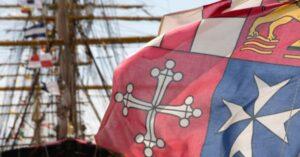
Should we forget what the so-called Mare Nostrum meant to the Ancient Romans? The term, coined around the 3rd-2nd century B.C. during the Punic Wars, was a baptismal name that our forefathers bestowed, not by chance, on their prominent Ally. The title, with which the Mediterranean Sea was honoured, enshrined the supremacy and power achieved thanks to the solid fleet created to defend the borders of the Empire.
A resource which changed the destiny of Mankind
The sea was a forge of civilisation, ideas of development, challenges, overcoming limits and the desire to discover unknown worlds” at that time. Explorers and navigators such as Christopher Columbus, Amerigo Vespucci, Marco Polo, Giovanni, Sebastiano Caboto and Umberto Nobile changed the Earth’s destiny. A melting pot of ethnicities, cultures, customs and traditions: the most precious treasure.
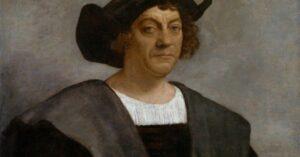
“At a very early age I began sailing the sea and have continued until now. This profession creates a curiosity about the secrets of the world”
(Cristoforo Colombo)
It allowed the people living on it to be the precursors of concepts and visions that led, from the classical culture of the Greeks to the splendour of the Italian Renaissance, to the idea of state and civil society.
Source of wealth and mystery: a treasure to be preserved
Encounters and exchanges synonymous with growth and development, where influences between cultures have stratified, merged or, in some cases, imposed themselves, creating the occasion for atrocious conflicts concerning the sheer dominance of this sea. Our boundless body of water is an open-air book, guardian of secrets and relics of which no one knows the absolute truth, perhaps only a few sea gods.
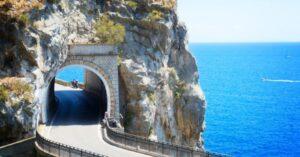
Indeed, this very aura of mystery makes the sea as fascinating as it is dangerous and frightening. There would be an endless chapter to open in this regard: the heritage has been bequeathed to us by our poets, writers and artists. But let us not lose the “route” and focus on the value of a further opportunity to remind us that sea is life.
Life for the fishermen who make a living from it, but above all for the countless species that live there in a precarious balance due to reckless, if not insane, exploitation of an invaluable resource.
The role of the sea on climate, ecosystems and its importance for the planet
Humans have often forgotten that Nature, sea and the oceans must be preserved. Due to shady economic interests and abuses, they have turned into the planet’s sewer, where everyone pours their poisons, thinking they are hidden and will never “arise”.
Unfortunately, however, this foolish popular belief, once justified by a lack of culture on the subject, discoveries, studies and scientific research is no longer tolerable. There is no excuse to justify those who, for decades now, have been poisoning our air, soil, water, and food: in other words, our well-being and our planet’s health.
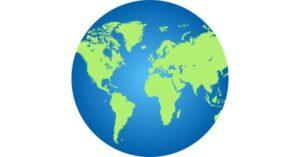
Not surprisingly, some have described the sea as the lifeblood because, covering 70% of the Earth’s surface, it returns 50% of the oxygen we breathe and assimilates 25% of the excess carbon dioxide. That explains its incalculable value on the world’s climate. It is not enough to scare us. A separate chapter, namely on International Seafarers Day (25 June), should be dedicated to the wealth and source of livelihood and employment for more than 4.3 billion people.
Environment and Legality: Mayor Angelo Vassallo’s example
Also known as the Fisherman-Mayor, he was the “first citizen” of Pollica, a village in the enchanting Cilento geographical region in Campania. He gave his life to the sea. Not only because he was one of the few remaining fishermen from the tiny hamlet of Acciaroli, an authentic pearl of this territory, but because he was mercilessly murdered for protecting the marine and non-marine environment.
“If you constantly live your land, you cannot help but strive to improve it daily”
(Angelo Vassallo)
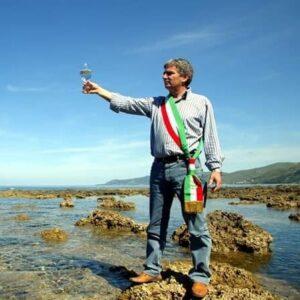
“Fishermen know that the sea is dangerous and the storms terrible, but they have never considered those dangers sufficient reasons to stay ashore”
(Vincent Van Gogh)
From a little, almost unknown fishing village, he created a human-friendly seaside resort in harmony with Mother Nature during his two consecutive terms in office. He strived at all costs and at all times to defend his town. He fought for his local youth, forced to emigrate elsewhere in search of work. He created opportunities for the children of his own land not to be abandoned and reborn, in all its splendour, in symbiosis with the sea. For the people of Acciaroli, the sea is a fountain capable of producing revenue around the pure tourist sector.
The heritage of the Fisherman-Mayor: safeguarding the sea
Respect: the feeling Vassallo had for the sea, despite the carelessness and contempt of those who would have liked to get their hands on such a precious jewel. Yet his death was not in vain. Just three months after his tragic death on 5 September 2010, the Fondazione Angelo Vassallo- Sindaco Pescatore (namely, the foundation in honour of the Fisherman-Mayor) was set up, strongly desired by his brothers Massimo and Dario, first and foremost, and with the enormous support of a family orphaned of an out-of-the-ordinary man: his wife Angelina and, respectively, his children Antonio and Giusy.
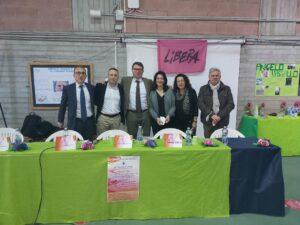
Since November 2010, the project aimed at cleaning the seabeds has been launched in picturesque Acciaroli, thanks to the support and valuable cooperation of fellow fishermen and the constant commitment of the municipal administration. To the present day, Vassallo is still the lighthouse showing the way.
Legge Salvamare: the Fisherman-Mayor’s dream finally comes true
Protecting the seabed of the wonderful Cilento coast, Legality and Environment as a timeless and borderless message is a mission for the Vassallo Foundation.
This tribute to Angelo’s memory and, of course, to the shared values of the same organisation has earned the Foundation the Merit of the Italian Ministry of the Environment. Sea”). For the same reason, the Environment Commission of the Italian Chamber of Deputies entrusted President Dario Vassallo with developing and drafting the so-called Legge Salvamare (literally, as the name suggests) the Law which “Save the Sea”).

It was a dream that became a reality even though some people mistakenly thought that nine gunshots were enough to kill his values. Mayor Vassallo was the spokesman for a people proud of their homeland.
“True wealth is the place where we live, and it is up to us to preserve it with all possible means”
Few, simple, concise and direct are Angelo Vassallo’s words. They perfectly embody the soul of the first Law in Italy aimed to protect the sea, lakes and rivers from toxic spills and waste to be recovered and reintroduced into the production cycle to safeguard these ecosystems.
And the seeds, sown by the humble but immeasurable Fisherman-Mayor, won’t stop. They keep on flying, blown and driven by a breath of love to take root in Europe and arouse the UN’s interest.
Italian National Sea Day 2023: initiatives throughout the country
In support of the above, all the events planned for the 2023 edition aim to raise awareness of the urgency and importance of saving marine landscapes and ecosystems, of which we are an integrated part. Jeopardising the health of the sea and its species means damaging ourselves. The concept, in itself, is straightforward and easily understandable.
However, the numerous initiatives we can attend and witness across Italy are a good reminder. Here is a selection of the most significant ones.
- The façade of Palazzo Chigi, the Italian Government’s seat in Rome, will be painted blue from 8 p.m. to midnight on Tuesday, 11 April. This symbolism emphasises the role of the sea as a resource with scientific, economic, cultural and tourist-recreational value.
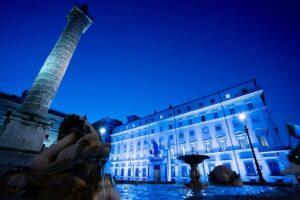
- Marina Militare Open Day: for the occasion, interesting visits will be allowed to Palazzo Marina in Rome, the naval bases of La Spezia, Taranto, Cagliari, Augusta, Ancona, Naples, and Venice. And again, you will see how the Italian Navy schools work with your eyes, an unmissable opportunity to introduce children from an early age to a highly educational and prestigious profession. You will observe large landing ships, lighthouses and many other installations up close.
For further information and the whole programme, we recommend visiting the official website of the Italian Navy in the special section dedicated to the Italian National Sea Day(only available in Italian).
“One can never cross the ocean unless one has the courage to lose sight of the shore”.
(Cristoforo Colombo)
Cover picture, Photo Credits: Monica Santonicola


